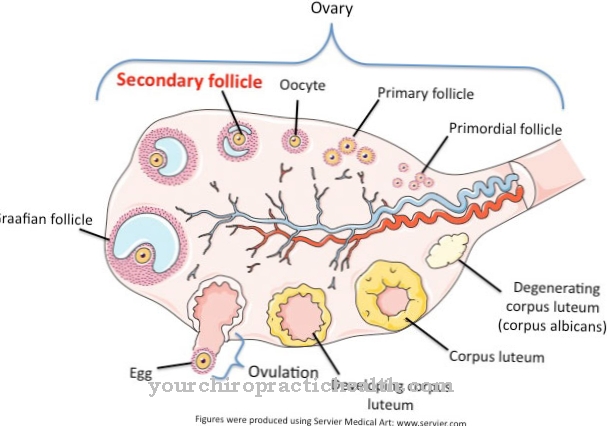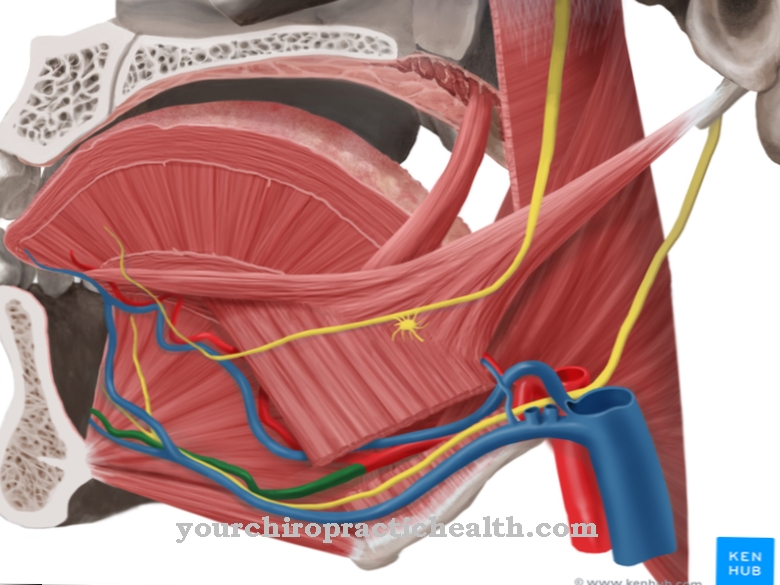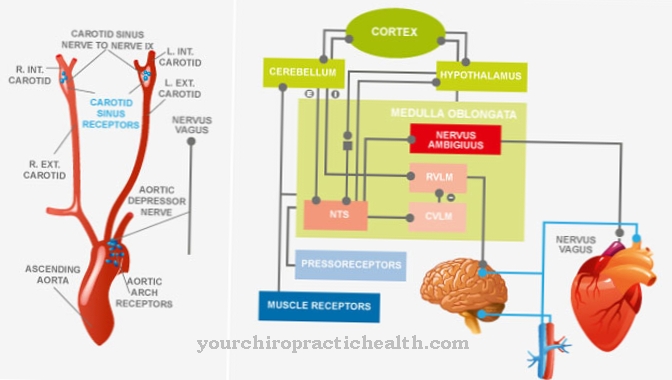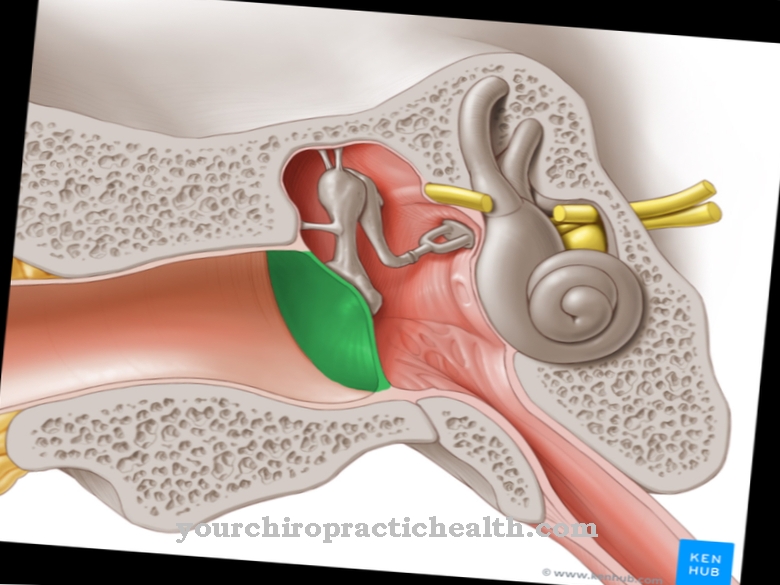Sebum glands are unevenly distributed over the entire human body. If the sebum production is disturbed, various problems can arise. The following is an overview of the function and structure, as well as possible complications with sebum glands.
What are sebum glands?

A large part of the human sebum glands can be found on the glandular tissue of the hair. They are therefore also called hair follicle glands. Sebum glands that are not attached to hair are known as free sebum glands and are found on the nostril, around the eyelids and lips, as well as in the genital area.
The Zeis and Meibomian glands around the eyelid, the Fordyce glands in the oral mucosa, and the Tyson glands in the genital area are also included in the group of sebum glands. Most of the sebum glands are located on the scalp, genital area, and in the T-zone of the face. The only parts of the body without sebum glands are the soles of the feet and palms.
Anatomy & structure
Sebum glands are so-called holocrine glands. This means that they secrete a secretion, which consists of the material of the surrounding gland cells. Sebum glands are located in the dermis.
They are connected to the surrounding sebum and hair gland follicles and lie next to them in a bulb-shaped trough. The sebum-producing glands have no exit of their own.
Their secretion, the sebum, is transported to the surface of the skin via the hair on the sebum gland. Under the microscope you can see a mixture of sebum and cell parts inside the gland. There are around 40 sebum glands on one square centimeter of skin.
Function & tasks
Sebum consists largely of triglycerides, wax esters, fatty acids and proteins. Sebum glands are located in the dermis, the second top layer of the skin. This skin layer supplies the vascular-free upper skin layer, the epidermis, with nutrients. A functioning sebum production is important for a healthy skin environment.
The fatty sebum serves to protect against pathogens and harmful external influences. Sebum glands ensure that the upper layer of the skin is supplied with sufficient moisture. They also keep the hair supple. The fatty sebum is also known as sebum. It is formed inside so-called sebocytes, sebum-producing cells, and transported to the surface of the skin when they burst. Sebocytes are continuously produced in the germinal layer of the sebum glands.
After their maturity, the newly formed cells move to the middle of the sebum gland and accumulate fats (lipids) on the way there. As soon as the sebocytes have arrived in the middle of the gland, they are bulging with lipids, so that they finally burst. The sebocyte residues themselves become part of the sebum and reach the surface of the skin together with it. On the way to the epidermis, the sebum-cell mixture washes dead and calloused skin cells out of the follicle walls. The sebum also has a cleansing function.
Home remedies ↵ for oily skin Spread over a day, about 1-2 grams of sebum is produced on the surface of the skin. The amount of sebum secreted depends on a number of factors. So not only the disposition plays a major role. The hormonal balance, gender and age, as well as diet and environmental influences can also influence the function of the sebum glands. With increasing age, sebum production decreases. As a result, older people tend to have drier and more vulnerable skin.
Illnesses & ailments
If the production of the sebum glands is disturbed, the development of skin diseases is favored. A distinction is made between seborrheic people, people with a relatively high sebum production and sebostatic people with reduced sebum production.
Seborrhea, an overproduction of sebum, manifests itself in a particularly oily and greasy complexion. If the sebum accumulates at the exit of the sebum gland, it becomes blocked. This can cause the glands to swell. The result is unsightly blackheads. These appear mostly distributed over the face, décolleté and back and can be seen as small black dots. Seborrhea is often treated by giving so-called antiseborrhoeic drugs, which bring increased sebum production back into balance.
A dry and rough skin is characteristic of sebostasis, a reduced sebum production. The low production of sebum disrupts the skin barrier. As a result, more water is secreted from the body through the skin. The skin appears dry, pale and low in fat and the hair is usually dull and dull.
In addition, the skin can react particularly sensitively to solar radiation due to its damaged protective coating. Itching in the affected areas is not uncommon with sebostasis. Furthermore, pathogens have easier access to the skin layer than in the case of a functioning sebum production.Sebostasis is usually treated with external therapy in the form of moisturizing creams or ointments.


























